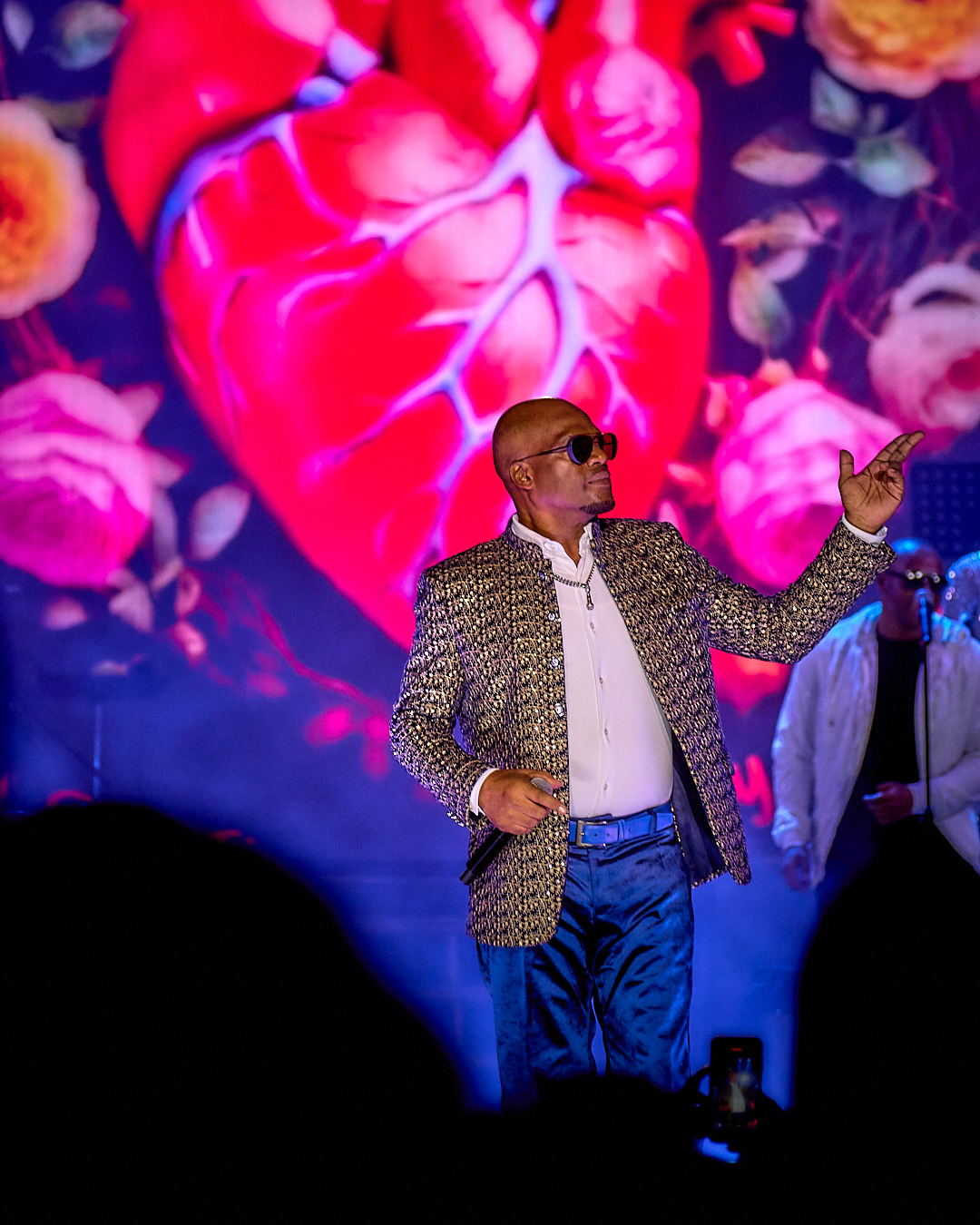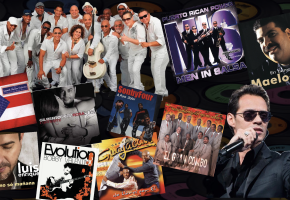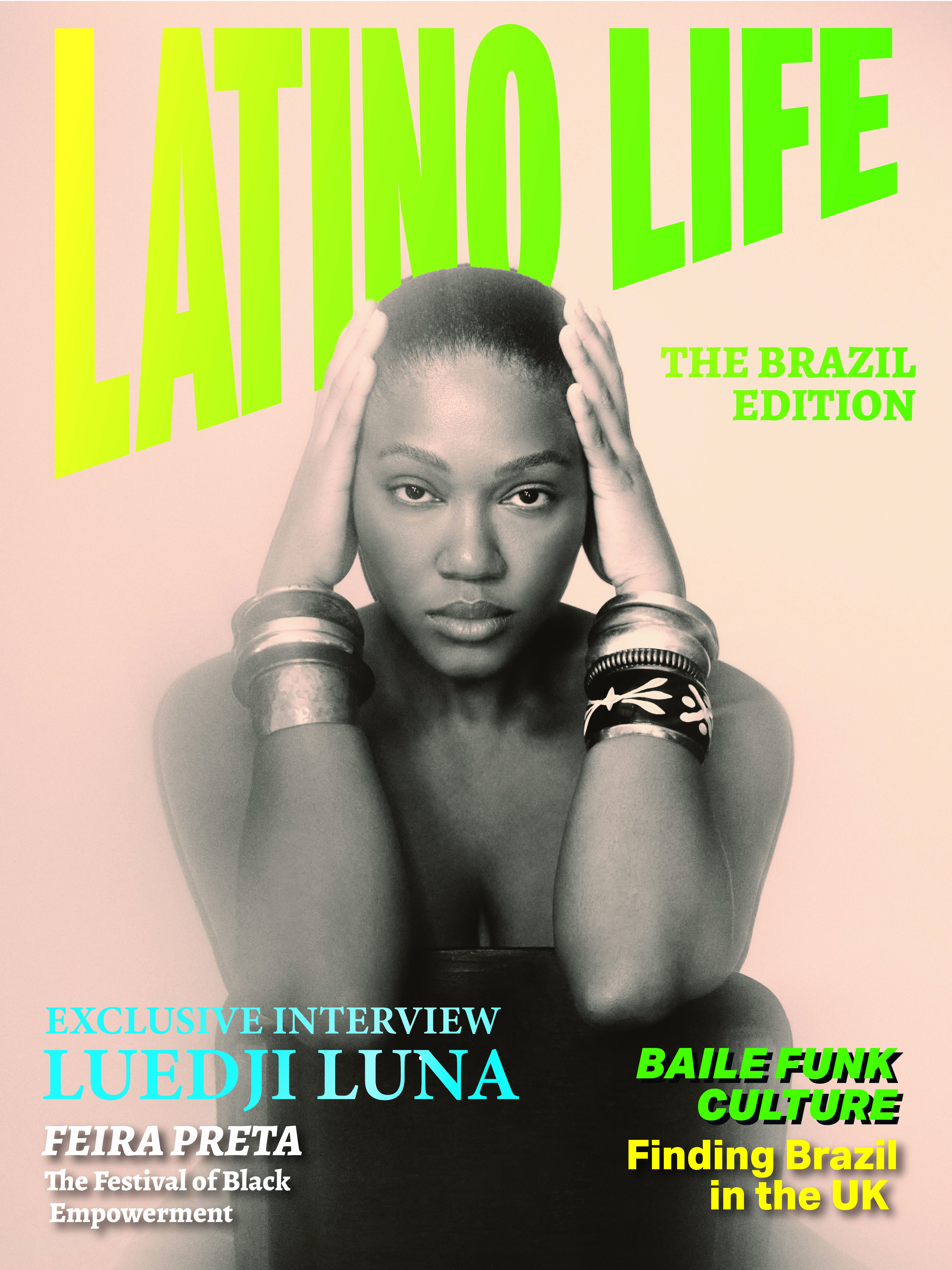Precious memories of my adolescence come back to me: quinceañeras filled with singing and dancing to Cali Pachanguero, De Boca en Boca, Tempestad, La Primera Dama, and Conflicto de Amor. As I sit preparing my interview with Jimmy Saa, I can hear the infectious rhythms and soulful lyrics that were the soundtrack to many joyful nights. Whether as singer of Grupo Niche or as a solo artist, Jimmy Saa's vibrant personality and unique tumbao evoke cherished moments, bringing them alive again.
Born in Buenaventura, on the Pacific coast of Colombia, known to be rich in Afro-Colombian culture, Jimmy Saa's musical journeyactually began in Esmeraldas, Ecuador, where he moved at the age of seven with his uncle Polo, who had an orchestra. Music was a way of life in his family and Saa was immersed in the rhythms of salsa, cumbia, and the traditional sounds of his heritage. "Music was everywhere," Saa recalls. "It was a part of every celebration, every gathering." But the real task for Jimmy was convincing his uncle that he had what it took to be a singer.
"My uncle told me that if I wanted to sing, I had to carry the instruments first and learn the business. So I started as a stagehand in my uncle’s orchestra." Little by little, Jimmy learned how to play percussion, the conga, timbal and bongo. "My uncle Polo, and all of the members from the orchestra, were my first musical teachers."
Finally, after a year of trying to convince his uncle to let him sing, Polo agreed. Songs like Juliana from Cuco Valoy and Roberto Torres, Oscar de Leon's Llorarás and Pensando en Ti from Cheche Mendoza were Jimmy’s first musical trials as a singer. Then, he moved to Lago Agrio for two years and started singing in different clubs. This early exposure laid the foundation for his future, shaping his musical tastes and inspiring his first steps into the world of performance.
After moving back to his hometown, Buenaventura, Jimmy began performing in bands like Integracion Porteña, where he built a reputation for having a powerful voice and charismatic stage presence. He then started working with La Octava Dimensión under Santiago Mejias, for five years as a bongocero and singer.

La Octava represented Saa’s first of many milestones; his first USA tour and his first soloist debut as a singer with Canovita. By now Jimmy was considered one of the most sought after musicians in Colombia, receiving offers fast and furious from the likes of La Supreme Corte and Grupo Niche, one the most iconic salsa bands in history. Initially, Jimmy rejected Jairo Varela's offer to join Niche. "I rejected Grupo Niche at first because I was going to be a bongo and cowbell player," Jimmy explained. "I wasn't going to sing, so I chose Suprema Corte instead."
Suprema Corte was just starting their music project, and allowed Jimmy's dream to come true with his first recorded song El Velorio de Tito and the opportunity to sing and tour in the USA, Latin America and Europe. The band's director, Andres Biafara, knew Jimmy was different. "Your voice is unique; you were born for this," he told him, encouraging Jimmy to keep on pursuing his singing journey.
After five years with Suprema Corte, Jairo Varela made his third attempt to recruit Jimmy. In 1996, Varela's persistence paid off, and Jimmy decided to join Grupo Niche, a turning point that catapulted him into the limelight and solidified his place in the international salsa music scene.
Jimmy began with Grupo Niche as a bongo, cowbell, and conga player, but during a live performance in Ecuador, Varela allowed Jimmy to sing "Buenaventura y Caney" for the first time. After witnessing Jimmy’s unique style, Valera declared to the group, "From now on, if Jimmy wants to sing, he can sing anything he wants."
Jairo Varela was a visionary, Jimmy claims, who taught him how to lead, manage a group with serenity, and maintain great discipline. "He instilled in us that musicians had to live from their art. He wanted to change the bad image of the music world, where many had vices. He emphasized that we should be different, and so we were. He demanded discipline from us."
Jimmy Saa remained with Grupo Niche for four years. His tenure with the band - where he honed his skills as a percussionist, vocalist, and showman - helped solidify his reputation in the salsa world and laid the foundation for his solo career. The exposure to different styles and the high standards of the band contributed to his musical evolution.

It was while with Niche that Jimmy started to think about a solo career, drawing on his own heritage from the Pacific coast, which was distinct from that of Cali, where Niche hailed from. What Jairo had done for Cali, putting it on the world map as 'the capital of salsa,' Jimmy wanted to do for the rich music of Buenaventura, which is still less well-known.
Today, what sets Jimmy Saa apart is his blending traditional folklore of the Pacific with modern salsa, incorporating instruments native to that coastal region, such as the Marimba, to create a musical style that is both innovative and deeply rooted in his heritage. "My music is a reflection of who I am," says Saa proudly. "It's a mix of the old and the new, a celebration of my roots and my journey."
Before launching his solo career, however, Saa took courage from other great teachers who encouraged him to develop his own style, including fellow Buenaventuran, Yuri Buenaventura, who he started travelling with throughout France. "I showed Yuri my first songs and he told me he was certain I was meant to go solo," says Jimmy.
His other music inspirations include Oscar de Leon, Los Bukis, Sergio Vargas, Marc Anthony, Fruko, Orquesta Guayacán, El Gran Combo, Irakere and Joe Arroyo, who all had their distinctive sounds. But the final catalyst in helping Jimmy make the final leap to showcase his own creations, was an encounter with the great Celia Cruz, to whom he confessed his dream of being a solo artist.
"Celia was fundamental in my career," Jimmy says. "Celia told me 'Lo que sea que hagas, hazlo bien. Tu tumbao es diferente. Te va a ir bien, no te preocupes."

And so Saa released his first solo project with his salsa/folklore fusion album Tempestad. Jimmy knew that it was not enough to be a good singer, however, if he wanted people to hear him, he had to take matters into his own hands. So, he became his own promoter, tirelessly selling his music and touring until he achieved national and international success. He distributed his music to Ecuador, Peru, the USA, and Europe, gradually establishing his name as Jimmy Saa. As his efforts paid off, people began to recognise his name, his distinctive tumbao, his unique golpe, and his undeniable flavour.
Jimmy is a complete artist: a great performer, a prolific songwriter, who infuses his lyrics with messages of love, resilience, and cultural pride. While Tempestad, launched Jimmy Saa's solo career, it was Conflicto de Amor that established him as the Embajador del Pacífico. "To be considered an ambassador means to represent my country, my music, all musicians. It also means being humble and working for the people I represent," he reflects.
Behind the scenes, Jimmy Saa is a devoted family man and a passionate advocate for his community. "Family is everything to me," he shares. "They are my biggest supporters and my source of inspiration." His commitment to his roots extends beyond music, helping the next generation of artists find their voice. “My biggest advice for young artists is to study, que no hagan música por hacer. The goal is to make music that can stay in people’s hearts for the rest of their lives. La música no tiene afán, no tiene carrera. You have to be patient, trabajar las canciones. Todo se va dando, little by little."
As Jimmy Saa looks back on his remarkable journey, he remains grateful for the opportunities he has had. "It's been an incredible ride," he says with a smile. "But there's still so much more I want to do."
On the horizon are three albums: a folklore-fusion album, an urban album and a masterpiece album showcasing his 20-year career. After this European tour, he has a global tour in his sights, to continue perfecting his craft and, who knows, perhaps a Grammy. With his unwavering passion and dedication, there's no doubt that Jimmy Saa will continue to be a driving force in Latin music, bringing his unique salsa con folklore to every stage, inspiring audiences and fellow musicians alike for years to come, "haciendo las cosas bien" as he always dreamt of.
"I want my music to make people feel at peace, happy and joyful," says Jimmy. "To be able to see a daughter, son, mom, dad, friends and strangers listen to us, to be a uniting force, that means the world. Que nunca pase de moda, to be remembered for my music. I want that to be my legacy."
Jimmy headlines LatinoLife in the Park on Saturday 20 July, in celebration of Colombian Independence Day. Tickets available at www.latinolifeinthepark.com


















